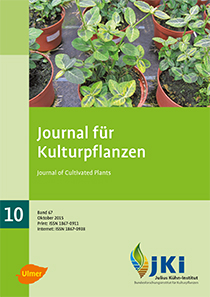Application of the Zürich-methodology for risk assessment concerning the inspection of pesticide application equipment in use according to article 8 (3) of Directive 2009/128/EC at the example of Germany
Keywords:
Directive 2009/128/EC, Sustainable Use Directive, Pesticide Application Equipment, Risk assessment, Inspection of equipment in use, Zürich-methodologyAbstract
Article 8 of Directive 2009/128/EC (Sustainable Use Directive) demands a risk assessment for human health and the environment in order to apply different time tables and inspection intervals in selected cases for the inspection of pesticide application equipment (PAE) in use or make exemptions from inspection within the member states of EU 27. The experts of the SPISE (Standardised Procedure for the Inspection of Sprayers in Europe) Technical Working Group agreed on their meeting in March 2015 to use the Zürich-methodology as an appropriate instrument to implement the demanded risk assessment in a harmonized manner within the EU 27. The article explains the Zürich-methodology, illustrates its requirements and demonstrates the application of this method at the example of a risk assessment in case of Germany. Furthermore, it shows of what questions still have to be discussed in future by the expert in order to come up with a common and harmonized procedure being applicable for all member states of EU 27.
DOI: 10.5073/JfK.2015.10.03, https://doi.org/10.5073/JfK.2015.10.03
Published
Issue
Section
License
The content of the journal is licensed under the Creative Commons Attribution 4.0 License. Any user is free to share and adapt (remix, transform, build upon) the content as long as the original publication is attributed (authors, title, year, journal, issue, pages).
The copyright of the published work remains with the authors. The authors grant the Journal of Cultivated Plants, the Julius Kühn-Institut and the OpenAgrar repository the non-exclusive right to distribute and exploit the work.







